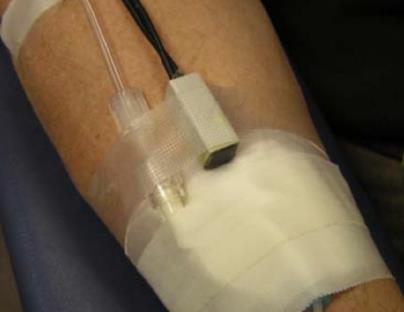PI’s: Omer Inan, Leanne West, & Kevin Maher

Intravenous (IV) therapy is received by more than 85% of hospitalized patients in the US. A major risk of IV use is the inadvertent dislodgement or other compromise to the vein which holds the IV catheter. This IV infiltration (leak into the surrounding tissue) can lead to local edema, discomfort, pain, ischemia and necrosis (death of the tissue). The problem of IV infiltration is very common in all ages of children receiving IV therapy. In adults, patients will complain when experiencing pain and swelling, and will ask the nurse to reposition or remove the catheter to alleviate the problem. Unfortunately, infants and young children generally do not complain in time, resulting in major skin, muscle, and tendon compromise locally that can cause both short-term and long-term damage that can be debilitating and disfiguring. IV infiltration is usually detected by comparing the site of injection to the contralateral side, and by feeling (palpating) the infusion area for swelling of the skin and underlying tissue. If there is a problem, the caregiver will reposition or remove the catheter accordingly. In many situations, several factors greatly increase the risk of devastating IV infiltration.
Our plan is to leverage recent advances in non-invasive sensing technologies, embedded systems, and wireless connectivity, to address this important problem with a multi-disciplinary effort.
Publications


